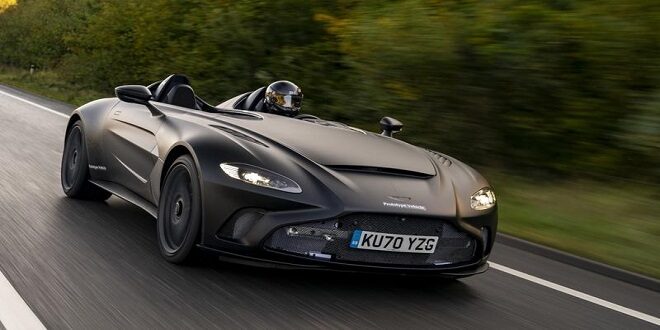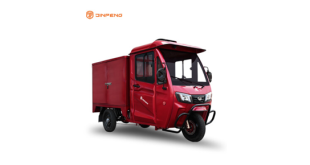Britain’s licensing authorities weren’t too sure what to make of the Stimson Scorcher in 1976, hesitatingly classifying it as a motorcycle-sidecar combination. By law, that meant “rider” and “pillion” had to wear crash helmets but the third occupant—the Scorcher seated three in a row—was legally the sidecar occupant and, thus, could ride bareheaded.
However, designer Barry Stimson advised Scorcher occupants to all wear helmets because his outrageous trike, with a British Leyland Mini subframe, engine, and gearbox at the front, could touch a daredevil at 100mph (161kph). The plastic body was made of fiberglass, and the engine was completely exposed, hot-rod style—unless you splurged on the optional plastic hood.
Mr. Stimson was a seminal figure in the burgeoning British kit car scene of the 1970s. His company Noovoh Developments sold the Scorcher as a self-assembly package, for £385, that could be carried home on a roof rack. Capable, enthusiastic mechanics could then build their own Scorcher using salvaged mechanical parts from a decrepit or crash-damaged Mini.
Stimson’s initial kit car design was the Mini Bug of 1970 which became one of Britain’s best-selling kit cars. New Stimson designs, however, soon followed, including the six-wheeled Safari Six, also relying on Mini parts, and then the Scorcher, of which a mere 30 were made in four years. Barry Stimson is in the kit car business to this day, and surviving Scorchers rarely change hands.
Lotus 79
Italian-American racing driver Mario Andretti declared the Lotus 78 drove “like it was painted to the road,” and proved this Formula One car’s uncanny winning streak by driving it to four victories in 1977. But after trying its successor, the 79 with 30 percent extra downforce, he declared the old car felt “like a London bus” by comparison.
In 1978, the 79 helped him to the drivers’ World Championship. The Lotus 78 pioneered “ground effect” aerodynamics in Formula One after Lotus founder Colin Chapman and his design team discovered that sidepods shaped like inverted aircraft wings could form venturi tunnels on either side of the narrow chassis. This created a vacuum that literally sucked the car onto the tarmac.
Wind tunnel experiments using a rolling road produced amazing results, which were replicated on the test track using a stiff suspension to maintain a ground-hugging stance. Flexible, sliding rubber skirts stopped destabilizing air being drawn in from the sides.
The 79 brought a radical rethink. The whole car was now one giant “ground effect” venturi. The bodywork was extended back between the rear wheels, and the suspension was redesigned, so that low pressure was evenly spread along the car’s underside.
This improved grip, and meant a relatively small rear aerofoil was required, causing less drag. The 79 was one of the most elegant Formula One designs ever; together with its John Player Special livery, this brought about its nickname of “Black Beauty”.
Copper electric runabout
With every dramatic surge in oil prices comes renewed interest in alternative fuels for cars; the intense focus on electric power by carmakers at the end of the first decade of the 21st century is nothing new. There was wide interest in bringing small electric cars to the market in the late 1970s, as the recent fuel crisis receded but the world dipped into an economic recession and concerns mounted about urban air pollution.
Many prototypes were demonstrated but this particular example hailed from an unusual source: America’s Copper Development Association, an industry body devoted to promoting metals in industry. Its Runabout, the sixth in a series of electric car prototypes started in 1970, was a rolling advert for copper, featuring it in the motor, cables, switches, winding mechanisms, wiring, and also in brake drums, brake tubing, and airlines.
The Runabout was reasonably normal-looking. A glass sunroof helped to ventilate the cramped interior, while the smooth fronted nose had pedestrian-friendly concealed windshield wipers, and the plastic body featured a useful hatchback. The car was claimed to have a range of 79 miles (127km), and running costs of no more than two cents a kilometer.
Last word
Its 18 six-volt batteries could recharge overnight. The copper industry was in the doldrums, and the lack of uptake in electric cars didn’t help. But no one could foresee the explosion in telecommunications and IT—consuming enormous amounts of copper.
 Magazine Today
Magazine Today

